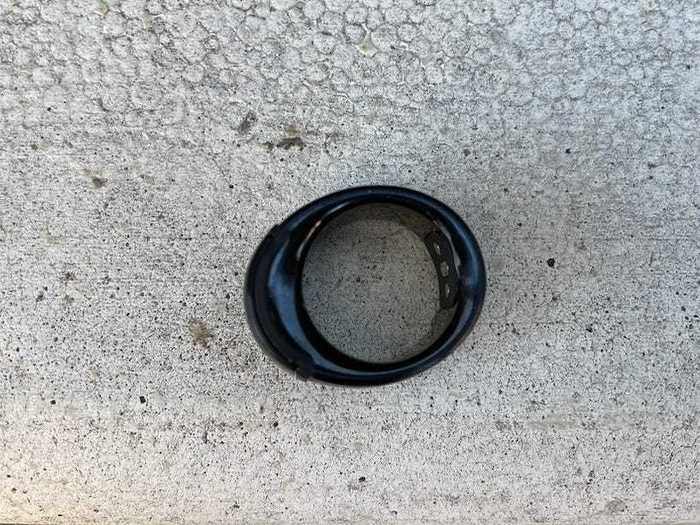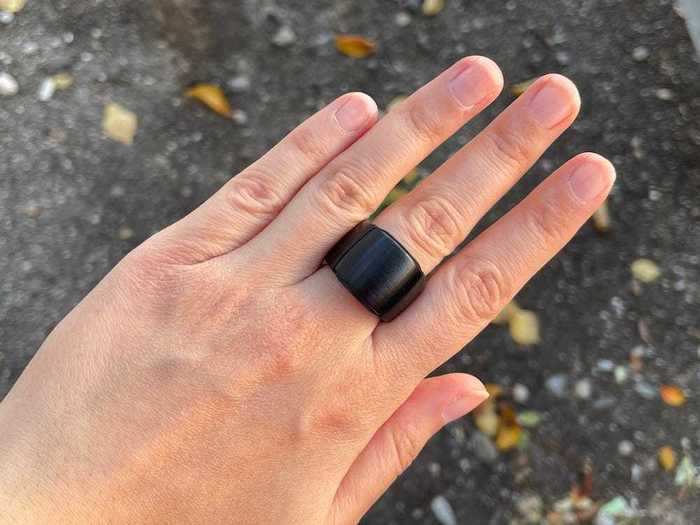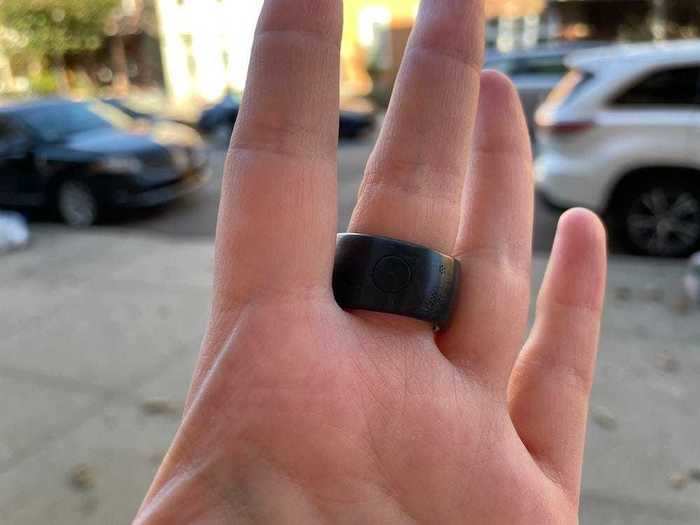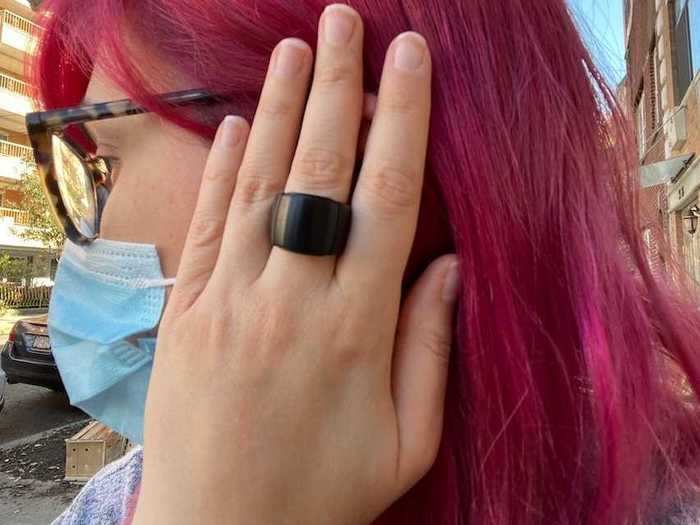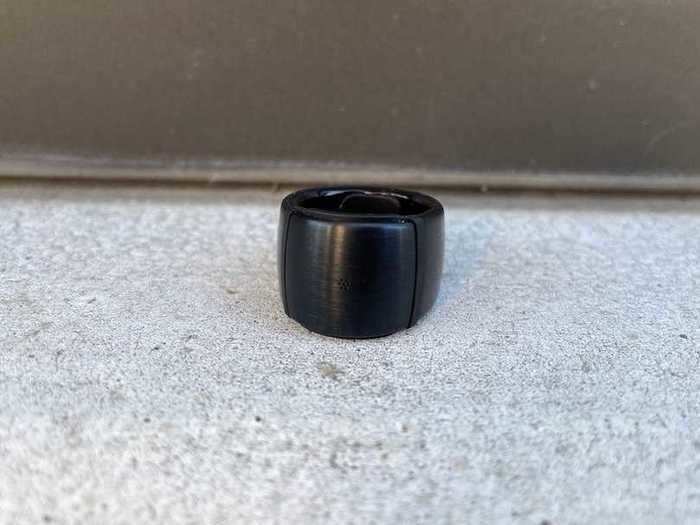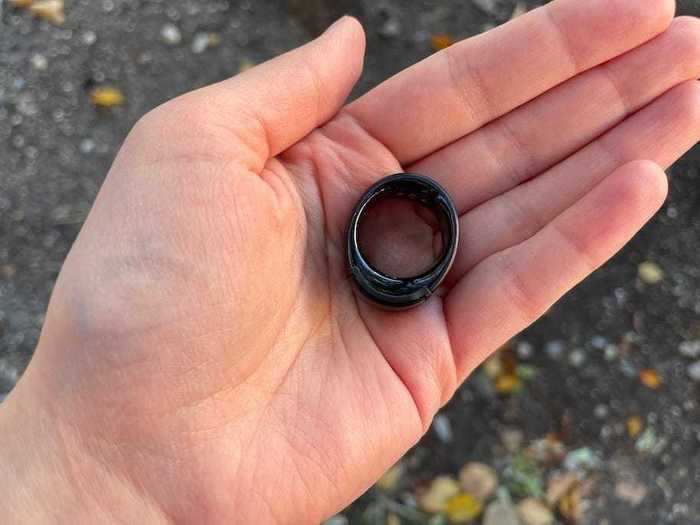Lisa Eadicicco/Business Insider
- Amazon's Echo Loop is a $129.99 smart ring that makes it possible to summon Alexa with a quick tap.
- It's part of Amazon's Day 1 Editions program, meaning you need a special invitation to buy it.
- While I've found the Echo Loop to be useful for some tasks, like checking the weather, the device generally feels like it doesn't have a clear enough purpose to justify the price.
Sometimes it can be hard to remember that the Amazon Echo has only existed for about six years. The company's Alexa voice assistant, the driving force behind its Echo line, can now be found in everything from wall clocks to microwaves, door locks, light bulbs, and much more.
Last year in September, Amazon added jewelry to that list by unveiling the Echo Loop, a smart ring with a button that literally puts Alexa at your fingertips.
It's designed to make it easier to access Alexa on-the-go so that you can perform tasks like adding items to your grocery list, checking the weather, or setting reminders, without having to reach for your phone.
The problem, however, is that there are many other wearable devices that offer a lot more than the Echo Loop, and do it better. That makes it hard for the Echo Loop to stand out.
Other than the novelty of feeling a little bit like a secret agent when speaking into the high-tech ring sitting on my finger, it's hard to answer the question of why you'd really want or need the Echo Loop.
It's another reminder that adding smart features like voice assistants to everyday items isn't always useful. But, since the Echo Loop hasn't been widely launched just yet, I imagine the Echo Loop is more of an exercise in exploring broader use cases for Alexa in wearables than anything else.
The Echo Loop isn't intended for the masses just yet. It's part of Amazon's Day 1 Editions program.
Lisa Eadicicco/Business Insider
The online retail giant unveiled the smart ring during its fall product event in 2019, alongside its Echo Buds headphones, its previous generation Echo speaker, and a pair of smart glasses.
Like the Alexa-enabled spectacles, the Echo Loop isn't exactly a real product yet, but it's also not a prototype.
It's part of Amazon Day 1 Editions: a program in which customers can request to purchase a new product and provide feedback that could inform future product decisions. That also means you need an invitation from Amazon to buy the Echo Loop.
If you receive an invite to buy the Echo Loop while its in the Day 1 Edition stage, it'll cost $129.99. But that price goes up to $179.99 after the introductory period.
Right now, the Loop is still in its Day 1 Edition phase and Amazon has not said if or when it plans to broaden availability of the Echo Loop.
Setting up the Echo Loop is simple.
Lisa Eadicicco/Business Insider
To get started, I placed the ring on its charger, pressed the button located on the ring's underside to turn it on, and launched the Alexa app. I easily found my Echo Loop after tapping the "Add a Device" section in the app.
If you want to pair the Echo Loop with a different phone, you must de-register the device from your Alexa app and factory reset the ring by triple-pressing then long-pressing the button.
The Echo Loop is really designed for one thing: accessing Alexa.
Lisa Eadicicco/Business Insider
Unlike Amazon's other gadgets, you don't use voice recognition to trigger Alexa on the Echo Loop.
And that's a good thing — after all, I don't know how comfortable I'd feel wearing a device that's constantly listening for a wake word everywhere I go. (Your phone can "always listen" for a wake word to summon Google or Siri, but you can turn this feature off.)
On the Echo Loop, there's a tiny button on the underside of the ring, as shown in the photo above, that you can press to launch Amazon's voice assistant. The ring then vibrates gently to let you know Alexa is listening.
As long as your phone is within range, Alexa will reply through the ring's built-in speaker. By default, the volume of Alexa's voice is very low and only audible by holding the ring up to your ear. You can, however, raise the volume by asking Alexa.
The Echo Loop also has a couple of other tricks, like making phone calls, but the experience can feel awkward.
Lisa Eadicicco/Business Insider
Summoning Alexa is the Echo Loop's biggest draw, but the ring can do a few other things too. You can, for example, long press the button to launch the virtual assistant on your phone (Apple's Siri or the Google Assistant), and call a designated contact with a double press.
But just because I can make a phone call through the Echo Loop doesn't mean I'd necessarily want to. That's because the experience can be a little awkward to say the least.
The recipient of my call couldn't hear me unless I spoke directly into the ring, and I could only hear the person on the other end if I held the ring directly up to my ear as he spoke.
That means I had to move my hand from my mouth to my ear throughout the conversation. Even making phone calls through a smartwatch is more comfortable, with the watch functioning like a speakerphone.
I don't think Amazon ever intended for the Echo Loop to be used for lengthy phone calls. But I was hoping the experience of even making a quick call using it would be more like that of a smartwatch.
The Echo Loop is most useful for answering quick questions and setting reminders.
Lisa Eadicicco/Business Insider
I've been using the Echo Loop for tasks like checking the weather or finding operating hours for nearby stores, as well as setting timers, reminders, and alarms.
These are the types of requests that the Echo Loop excels at, and I can imagine it being useful during commutes when I don't have the time to pause and grab my phone. Requests with short, concise answers suit the Echo Loop well, making it easy to get quick bits of information without having to pause whatever I'm doing.
Unfortunately, it's difficult to tell precisely how useful the ring would actually be in everyday scenarios. Like almost everyone else, I've been spending most of my days at home because of the coronavirus pandemic, largely limiting my use of the Loop to moments when my phone is out of reach or inconvenient to grab, like when I'm cooking, cleaning, or taking a walk.
The Echo Loop's biggest issue is that it doesn't feel like it has a clear purpose that justifies the price.
Lisa Eadicicco/Business Insider
When Amazon comes up with an idea for a new product, it outlines the concept through what's known as a "working backwards" document.
The document is essentially a mock press release designed to help the company answer the critical question of why Amazon is creating the product in the first place and the problem the device aims to solve.
But after several days of using Amazon's Echo Loop, I've had a hard time understanding what that answer may be.
I appreciate the simplicity behind the Echo Loop: it's a focused product that's designed to do one thing well. However, I don't think that one thing — accessing Alexa on-the-go without grabbing your phone — is compelling enough on its own.
Not to mention, Amazon is tackling a market that's already crowded with other devices like smartwatches and truly wireless earbuds that offer similar functionality and much more.
You could argue that many smartwatches cost considerably more than the $130 Echo Loop, but that's not true for earbuds like Amazon's own $130 Echo Buds and Apple's $159 AirPods, both of which also offer hands-free access to voice assistants.
That being said, Amazon probably knows the value of the Echo Loop isn't quite proven yet. That's why it's part of the Day 1 Editions program and isn't broadly available just yet. Getting the ring on the hands of a small number of customers is probably helping the company answer the important questions it may have laid out in its "working backwards" pitch.

